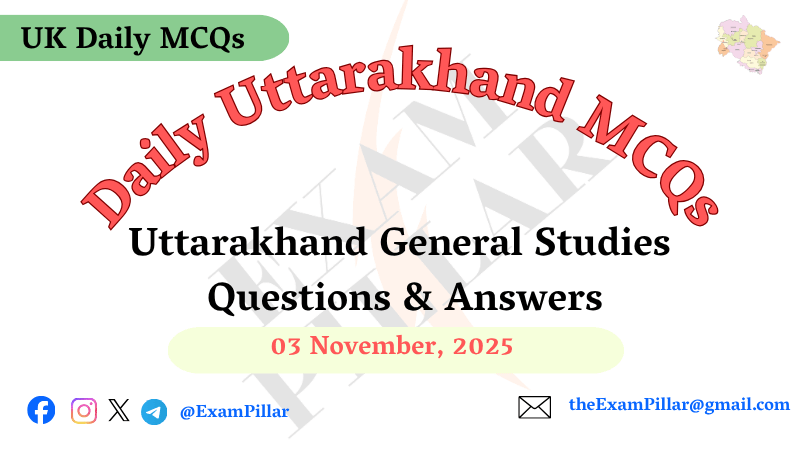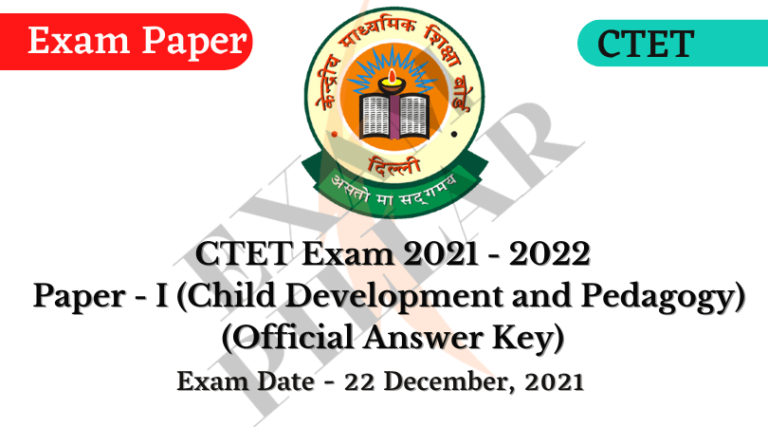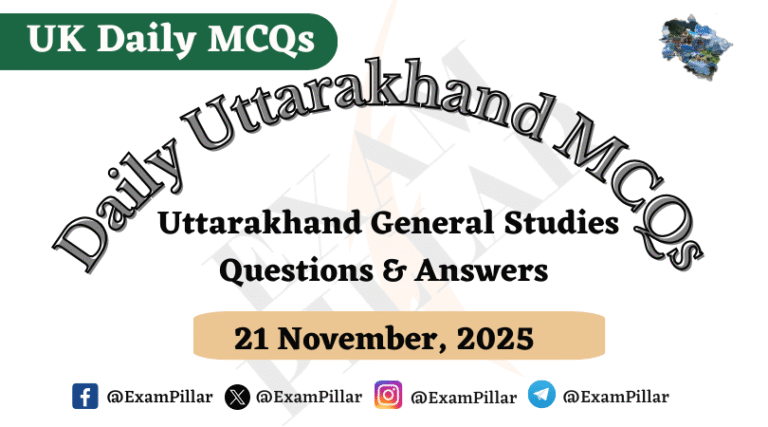The Exam Pillar brings you the Daily MCQs program for examinations conducted by the Uttarakhand Public Service Commission (UKPSC) and the Uttarakhand Subordinate Services Selection Commission (UKSSSC). This program provides candidates with objective study materials tailored to the exam format of the Uttarakhand Public Service Commission and the Uttarakhand Subordinate Services Selection Commission.
Daily UKPSC / UKSSSC MCQs : Uttarakhand
03 November, 2025
Q1. In what type of geographical region is the Megalithic Culture believed to have developed?
(A) Areas situated along rivers
(B) Desert regions
(C) Foothill regions
(D) Coastal regions
Click To Show Answer/Hide
Explanation: The Megalithic Culture belonged to human groups who lived in the foothill regions. The marks found on stones and rocks in these areas provide insights into their religious and social practices.
Q2. How many cup-marks related to the Megalithic Culture were found south of the Chandreshwar Temple in Dwarahat?
(A) About 100
(B) About 200
(C) About 300
(D) About 500
Click To Show Answer/Hide
Explanation: Around 200 cup-marks (mortar-shaped depressions) were found south of the Chandreshwar Temple in Dwarahat, engraved in twelve parallel rows. This discovery indicates the wide spread of the Megalithic Culture in this region.
Q3. Who first discovered the figures related to the Megalithic Culture?
(A) Dr. M. P. Joshi
(B) Rivett-Carnac
(C) Yashwant Kathauch
(D) Yashodhar Mathpal
Click To Show Answer/Hide
Explanation: The figures related to the Megalithic Culture were first discovered in 1877 by Rivett-Carnac. He was the first to mention cup-marks and identified them as an important feature of the Megalithic Culture.
Q4. The cup-marks are associated with which culture?
(A) Chalcolithic Culture
(B) Megalithic Culture
(C) Painted Grey Ware Culture
(D) Harappan Culture
Click To Show Answer/Hide
Explanation: Cup-marks — shallow mortar-shaped depressions carved on rocks — are the most significant identifiers of the Megalithic Culture. They are believed to symbolize religious, ritualistic, or social activities.
Q5. Into how many categories did Dr. M. P. Joshi divide the Megalithic cup-marks found in Kumaon?
(A) Five categories
(B) Six categories
(C) Seven categories
(D) Eight categories
Click To Show Answer/Hide
Explanation: Dr. M. P. Joshi classified the Megalithic cup-marks found in Kumaon into seven categories. He identified the Thok and Mool tribes as the groups of that period who participated in the cultural activities associated with these markings.





Leave a Reply